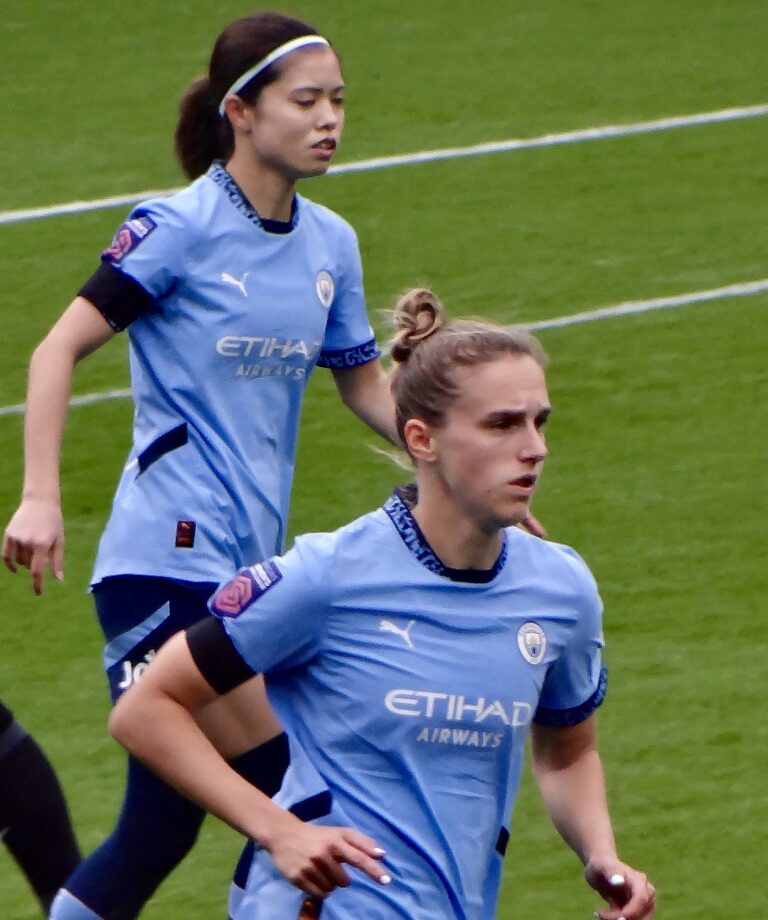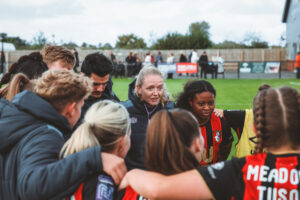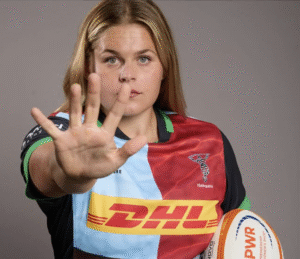ANDRÉE’S WAY – How Jeglertz has already transformed City
An in-depth examination of a total transformation of Manchester City by the Swedish maestro, Andrée Jeglertz, from our expert City writer, Gethin Thurlow


It’s just after 1:30pm on a wet and windy day in Manchester, the Joie Stadium specifically. Manchester City are leading Arsenal 2-1 in a back-and-forth WSL affair with 10 minutes left. City fans knew what this meant: throw the entire team back into a low block and substitute the attackers centre back. They were so used to this in the last few years under Gareth Taylor, most memorably in the eventual title-deciding collapse in this very fixture at the end of the 2023-24 season.
When Chloe Kelly fizzed a shot into the top corner to level the tie, flashbacks will have started and I’m sure most ‘citizens’ would’ve bitten your hand off for a draw at that point. However, what those fans were about to learn is that Andrée Jeglertz is a new man with new ideas, and no game is ever won or lost under him. At 2-1 up and when drawing 2-2 Jeglertz’s sides mindset never waivered from playing their natural game, trying to score goals and secure the game.
This meant that nothing really had to be adapted as they chased a winner. His team already had two recognised wingers on in this moment, which is more than the one they started the game with, while Bunny Shaw and Aoba Fujino stayed on for the duration of the game. Iman Beney had been subbed on in the 67th minute, a positive attacking change which feels like a far calling from the Taylor/Cushing years.
It was this change of course that won City the game, with Beney coolly slotting the ball in after 88 minutes to secure the three points and delight the fans. Suddenly the outlook had changed. The last 20 minutes were now a chance to turn the game around rather than something to fear and shy away from.
After just over a month of being in charge, this display incorporated everything that the Swedish coach has brought to the club and the changes that define him. With all due respect to the other clubs he’s defeated like Brighton, Tottenham and London City, any manager would fancy themselves to come out of those games victorious given the quality within City’s squad, but beating Arsenal in that manner shows that he’s really here to push City over the line in their challenge of winning the WSL title.
Positional tweak of Hasegawa
One of first and most notable changes from Jeglertz – which was already obvious in the Chelsea opening day defeat – was moving Yui Hasegawa up within the midfield and Khadija (Bunny) Shaw dropping back into midfield and wider areas more.
Hasegawa has long been known as a premiere holding midfielder in the WSL and the world. But her move into a higher area and the freedom this brings has opened up her attacking side, and she had a number of chances in the Chelsea, including from inside the Chelsea box. Having always been someone who won the ball back in midfield and controlled the game from the back, Hasegawa now controls the game from within as well, and her ability to combine directly with the front three has allowed her to create even more high-quality chances for her team, and for herself.
Discussing the move, City’s new boss said that she was a “player that would like to have the ball as much as possible because that’s beneficial for our team. It’s important to have her in build-up but also in the final third, that’s what we’ve been working with.” He added that “she’s extremely good in exploring where there’s space to find.”
More from Shaw
In terms of striker Bunny Shaw, she was always seen as purely a finisher of moves under previous iterations of City. The ‘city way’ is build upon a slow and controlled possession involving the whole team, which ideally results in an easy finish for the striker to put away, that was pretty much her only job. Jeglertz however, values some of her other attributes however, as he told us: “I also think we can benefit in central combination using her in some parts of the build-up to be a little more unpredictable, it’s more about involving her in the game and not just in the final third.”
This was showcased perfectly against Arsenal, as she dominated the first half of the game. Whether Arsenal got caught by this new use of Shaw or she simply couldn’t be defended on that day, she ran here, there and everywhere in that game, as well as providing the all-important hold-up play and assist for Iman Beney’s winning goal.
Unpredictable and dynamic
If there was anything to say about City under Taylor or Cushing, it would be that they were predictable in attack. Everyone knew what they would try to do, how they would threaten your defence and the question was only how to stop the inevitable.
Jeglertz’s team have employed different methods of attack, including by playing directly – with long balls from the back straight to Bunny Shaw, some possession-based build-up that is familiar to City, heavy pressing in certain moments and also sometimes just by playing through the team but much quicker than normal.
Jeglertz has been keen to emphasise that “what I’m pleased is that we have created scoring chances in many different ways, not just one part, I’ve been working with and talking about being an unpredictable team and I think we have been that.” This was said before the Arsenal match, and I think once more this new dynamism in attack was showed in the diversity of goals scored in that match.
New midfield balance
Whilst it overlaps with Hasegawa’s switch, this is an overall difference. Within the previous 4-3-3, that midfield operated more as a one-two with Hasegawa behind two attacking options, whereas now Hasegawa sits in a two, with a single attacking midfielder playing as a traditional number 10 ahead.
This gives both of those in the ‘holding’ two central roles more freedom to attack than Hasegawa enjoyed previously on her own in that role. Sydney Lohmann started the first game alongside the Japanese maestro, but since then Laura Blinkilde Brown has stepped into the role. Both these players have looked good in the system and it has been key to a faster and more direct attacking style.
Squad Rotation
Such was the nature of the rigid playing style before, that having a very fixed starting 11 – with each player knowing their role individually and how it fits in the wider system extremely well – was valuable to Taylor and Cushing to extent too. Building up that understanding between teammates was also crucial as various partnerships across the pitch were crucial to the way the ball moved.
This presented a number of issues though. A very small squad overall was used, with very few aside from the starting 11 ever getting regular minutes. Those players who did play so often were more likely to be injured due to this, and if they were injured then it was harder to replace the gaps left in the team. It felt like City’s injury crisis in Taylor’s final year was partially so bad because the players affected – Shaw, Hemp, Greenwood, Miedema – held such important roles within the team that no one could adequately replace them.
Jeglertz on the other hand, has changed it up almost every game, with Prior and Rose both getting time at centre back, Lohmann and Blinkilde Brown playing alongside Hasegawa and Miedema, Coombs and Clinton all playing the number 10 role. Rotation isn’t limited to outfield though, with Yamashita, Keating and Cummings all enjoying starts in goal so far. He said this was just down to “finding the best keeper for each day.”
Speaking on his squad rotation overall, he commented that “my leadership is about creating a team where everyone feels they can contribute” and that “everyone will be important during a long season, I need to show already that it means something to me. That’s why it’s looked like it has so far.”
Individual player development
While the overall performance levels have been high from the whole squad so far, there’s a number of players that have really come to life since Jeglertz joined, including Laura Blinkilde Brown. She signed in January 2024 and while there was a lot of initial excitement, we never got to see the best Blinkilde Brown – until now. Although he refused to take credit for her sudden growth, the impact he’s had on her is clear to see and with a lot of other young players in the squad, fans can be excited to see what he can do with them too.
Kerstin Casparij is one that already had a brilliant end to the last campaign, but under Jeglertz she has become a different beast, winning player of the match in three games already. “She’s developing all the time” and “having a bigger role in the attacking part than before” was what Jeglertz had to say about the Dutch international.
Though it’s only been a short time, Andrée Jeglertz’s coaching tenure at Man City so far offers a lot of hope that finally there’s a new dawn at the club, from being the one that’s always close but not quite getting there. As the international break looms, Jeglertz has brought a lot of new ideas into the club, and Manchester City supporters should feel excited about what the rest of the season can bring.
Andrée Jeglertz photo: Katie Chan







